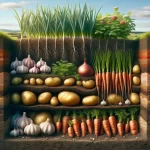Introduction to Onion Cultivation
Onion (Allium cepa) is one of the most important horticultural crops globally due to its extensive culinary use and economic value. Success in onion cultivation depends on proper management practices that optimize production and ensure the quality of the final product. This guide explores key practices for effective onion cultivation management, from variety selection to harvest and post-harvest handling.
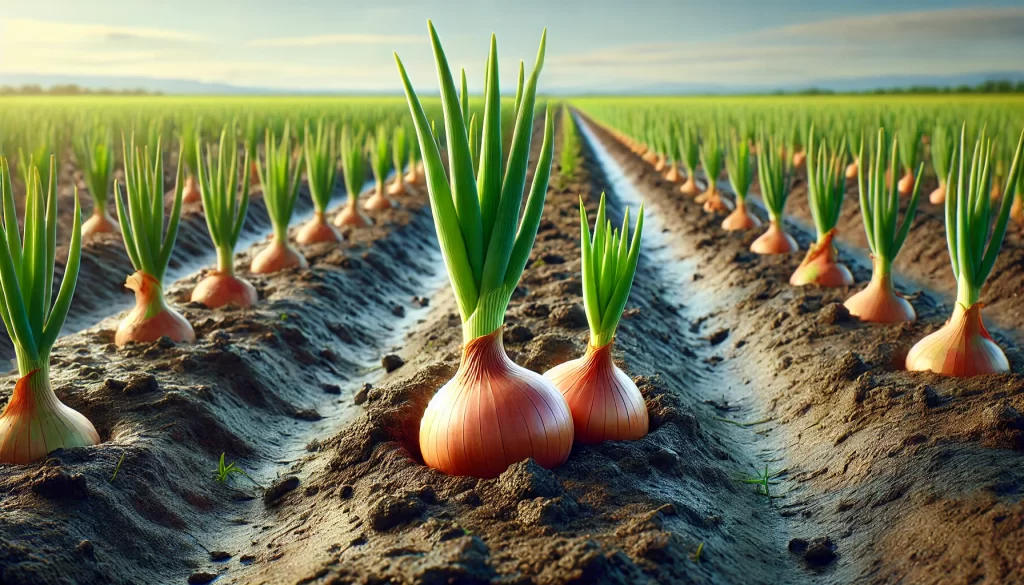
Onion Variety Selection
Factors to Consider in Variety Selection
Choosing the right variety is essential for successful onion cultivation. Factors to consider include:
- Climate: Some varieties are better suited to cold climates, while others thrive in temperate or warm climates.
- Photoperiod Duration: Onions respond to photoperiod, so it is important to select a variety that matches the day length in the growing region.
- End Use: Determine whether the onions will be grown for fresh consumption, storage, or processing.
- Disease Resistance: Choose varieties that are resistant to diseases prevalent in the region.
Main Onion Varieties
Some of the most recommended varieties include:
- Grano de Oro: Ideal for long-term storage and resistant to diseases.
- Valenciana: Known for its high productivity and good adaptability to different climates.
- Texas Grano 502: Popular in warm climates and suitable for fresh consumption.
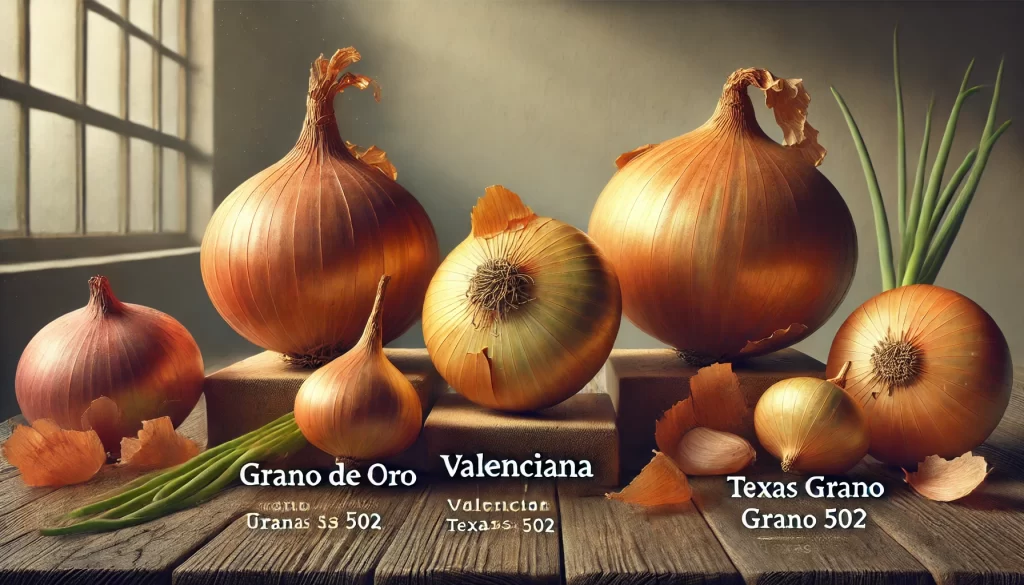
Soil Preparation for Onion Cultivation
Soil Analysis and Preparation
Onions require well-drained and fertile soil for proper growth. Essential steps in soil preparation include:
- Soil Analysis: Evaluate soil nutrient levels, pH, and texture to determine amendment needs.
- Tillage: Perform deep tillage to improve soil structure and facilitate root growth.
- pH Correction: Adjust soil pH to an optimal range of 6.0 to 6.8, using amendments like agricultural lime if necessary.
Soil Fertilization
Onions have specific nutritional needs. It is essential to apply the necessary nutrients to ensure vigorous growth:
- Nitrogen (N): Promotes vegetative growth.
- Phosphorus (P): Important for root and bulb development.
- Potassium (K): Enhances bulb quality and disease resistance.
Onion Planting
Seed Material Preparation
Seed material can come from seeds, seedlings, or bulbs, depending on the production system. Key steps include:
- Seed or Seedling Selection: Use high-quality seeds and healthy seedlings to ensure good crop establishment.
- Seed Treatment: Consider treating seeds with fungicides or insecticides to prevent diseases during germination.
Planting Techniques
Planting techniques vary depending on the production method and local conditions:
- Direct Sowing: Suitable for large areas, with a spacing of 10 to 15 cm between plants and 30 to 40 cm between rows.
- Transplanting: Used when more precise control over spacing and plant establishment is desired.
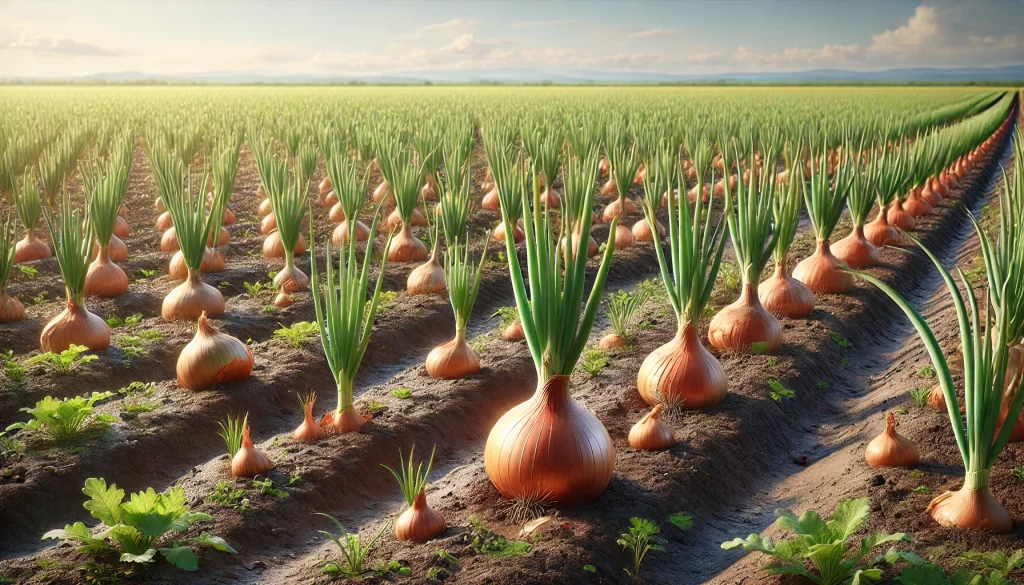
Irrigation Management in Onion Cultivation
Onion Water Requirements
Proper irrigation is crucial to avoid water stress and ensure good bulb development. The critical stages requiring precise irrigation are:
- Emergence and Initial Growth: Light irrigation to support germination and seedling establishment.
- Bulb Formation: Moderate irrigation to ensure good bulb development.
- Maturation: Reduced irrigation to avoid bulb rot issues.
Recommended Irrigation Systems
The most efficient irrigation systems for onion cultivation include:
- Drip Irrigation: Provides a constant and controlled water supply, minimizing water loss through evaporation.
- Sprinkler Irrigation: Suitable in areas where water is limited, but it must be controlled to avoid the spread of foliar diseases.
Pest and Disease Control in Onion Cultivation
Main Onion Pests
Pests can cause significant damage to onion crops. Some of the most common include:
- Onion Thrips (Thrips tabaci): An insect that feeds on leaves, causing spots and reducing growth.
- Onion Fly (Delia antiqua): Whose larvae attack bulbs, causing rot and decreasing quality.
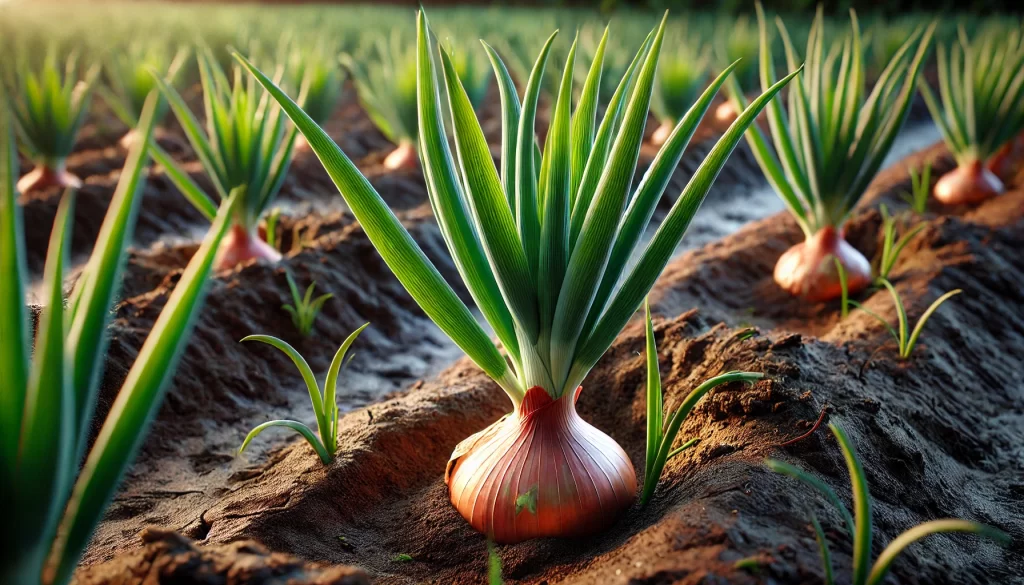
Common Onion Diseases
The most common diseases affecting onion crops include:
- Downy Mildew (Peronospora destructor): Caused by a fungus, it appears as yellow spots on leaves, eventually turning brown and dry.
- Neck Rot (Botrytis allii): Affects the bulb’s neck area, causing decomposition during storage.
Integrated Pest Management Strategies
For effective pest and disease management, it is recommended to use an Integrated Pest Management (IPM) approach, which includes:
- Crop Rotation: Avoid growing onions in the same place for several consecutive years.
- Biological Control: Use natural enemies of pests, such as predatory or parasitic insects.
- Fungicide and Insecticide Application: Use chemicals responsibly, following technical recommendations and safety intervals.
Onion Harvesting and Post-Harvest Handling
Maturity Indicators
Onions should be harvested when the bulbs have reached full maturity. Maturity indicators include:
- Leaf Drying: The leaves turn yellow and begin to dry out.
- Thin Neck: The bulb’s neck should be dry and thin.
Harvesting Techniques
Harvesting techniques depend on the crop size and available tools:
- Manual Harvesting: Used in small plots, ensuring careful handling of the bulbs to avoid damage.
- Mechanical Harvesting: Recommended for large areas, using harvesters that minimize bulb damage.
Post-Harvest Handling
Proper post-harvest handling is crucial to prevent losses. Recommended practices include:
- Bulb Curing: Leave the bulbs in a dry, well-ventilated place for 10 to 14 days to allow the outer skin to harden and dry.
- Storage: Store onions in a cool, dry place with good air circulation to prolong shelf life and reduce disease incidence.
Onion Crop Marketing
Grading and Selection
Before marketing, it is important to grade onions by size, shape, and quality. This ensures the product meets market standards and maximizes its value.
Packaging and Transportation
Onions should be packed in mesh bags or boxes that allow ventilation. Transportation should be done in well-ventilated vehicles to avoid excessive heating and bulb decay.
Market Strategies
The onion market is competitive, so it is important to identify market trends, including the demand for organic onions or specific varieties. Participating in local markets and establishing relationships with wholesalers can increase crop profitability.
 AgronoBlog – Agriculture Blog
AgronoBlog – Agriculture Blog 
